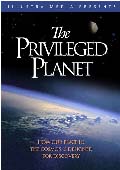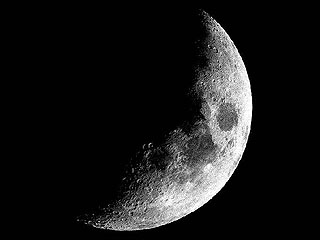Moons Like Earth's Moon are Rare in the Universe

Introduction
Proponents of intelligent design claim that the universe, Milky Way Galaxy, Solar System, and earth are specifically designed by an intelligent agent for habitation by human beings. Others say that such claims amount to a God of the gaps argument, since scientists do not yet have answers for the apparent design of the universe. If the skeptics of intelligent design are correct, then science should be finding that we do not occupy any special place in the universe. However, a new study disputes the idea that earth's moon is just an ordinary moon.
Formation of the Moon
Scientists now know that the Moon was formed by the collision of the small planet with the earth, which resulted in the ejection of 5 billion cubic miles of the earth's crust and mantle into orbit around the earth. This ring of material, the theory states, would eventually coalesce to form the moon. In addition, the moon is moving away from the earth (currently at 2 inches per year), as is predicted by the theory. If we calculate backwards, we discover that the moon must have formed just outside the Roche limit, the point at which an object would be torn apart by the earth's gravity (7,300 miles above the earth's surface). A collision which would have ejected material less than the Roche limit would have formed only rings around the earth. Computer models show that a collision of a small planet with the earth must have been very precise in order for any moon to have been formed at all.
The new study
When a moon is formed by the kind of collision that formed Earth's Moon, dust would have been blasted throughout the solar system. Astronomer Nadya Gorlova of the University of Florida, Gainesville, decided to study newly forming stars to determine what percentage might have a moon that formed through one of these massive collision events.2 In examining 400 newly formed stars (30 million years old), only one shared characteristics that would suggest that such a large collision had occurred, which might form a moon. Of course, the probability that the newly formed moon would orbit an earth like planet within the habitable zone would be much less likely.
Conclusion 
 Although
no earth-like planets have been detected yet, it is likely that they do exist.
However, it is unlikely that such earths would have a moon the size of
Earth's moon, since such a pair could not coalesce together, nor could such a
moon be captured by a small planet like the earth. Therefore, the only means by
which such a moon could form would be through a collision event early in the
history of stellar formation. In the first study to examine the probability of
such a formation, a new study shows that only one in 400 new stars might
have formed such a moon through a collision event. Why is it important how the
moon was formed? Without such a large moon, earth's rotation axis would be
unstable, swinging through 90� or more, resulting in extremely variable climate
over its history. In addition, the collision event itself blew off earth's heavy
early greenhouse atmosphere, which allowed the planet to retain its water for
billions of years. The removal of much of the earth's crust also allowed the
earth to retain its tectonic activity for billions of years, which allowed for
the existence of both land and ocean. Without such tectonic activity, earth
would have become and remained a waterworld. For more information, see
The Incredible Design of the Earth and Our Solar System.
Astronomy and cosmology continue to provide evidence that the earth is not just
an ordinary planet in an ordinary solar system.
Although
no earth-like planets have been detected yet, it is likely that they do exist.
However, it is unlikely that such earths would have a moon the size of
Earth's moon, since such a pair could not coalesce together, nor could such a
moon be captured by a small planet like the earth. Therefore, the only means by
which such a moon could form would be through a collision event early in the
history of stellar formation. In the first study to examine the probability of
such a formation, a new study shows that only one in 400 new stars might
have formed such a moon through a collision event. Why is it important how the
moon was formed? Without such a large moon, earth's rotation axis would be
unstable, swinging through 90� or more, resulting in extremely variable climate
over its history. In addition, the collision event itself blew off earth's heavy
early greenhouse atmosphere, which allowed the planet to retain its water for
billions of years. The removal of much of the earth's crust also allowed the
earth to retain its tectonic activity for billions of years, which allowed for
the existence of both land and ocean. Without such tectonic activity, earth
would have become and remained a waterworld. For more information, see
The Incredible Design of the Earth and Our Solar System.
Astronomy and cosmology continue to provide evidence that the earth is not just
an ordinary planet in an ordinary solar system.
Related Resources 
 Rare
Earth: Why Complex Life is Uncommon in the Universe by Peter D. Ward and
Donald Brownlee
Rare
Earth: Why Complex Life is Uncommon in the Universe by Peter D. Ward and
Donald Brownlee
A secular book (2000) that recognizes the improbable design of the earth. Paleontologist Peter D. Ward and astrobiologist Donald Brownlee examine the unusual characteristics of our galaxy, solar system, star, and Earth and conclude that ET may have no home to go to. Surprisingly, the authors conclude that the amazing "coincidences" are the result of good luck and chance.
 The
Creator and the Cosmos
The
Creator and the Cosmos![]() by Dr.
Hugh Ross
by Dr.
Hugh Ross
A classic book by astronomer Hugh Ross on modern Christian apologetics and science, (updated June, 2001). Dr. Ross presents the latest scientific evidence for intelligent design of our world and an easy to understand introduction to modern cosmology. This is a great book to give agnostics, who have an interest in cosmology and astronomy.
References 
- Taylor, G. Jeffrey. July, 1994. "The scientific
legacy of Apollo" Scientific American 271 (1): 40-47.
Giant Impact Theory For Moon Formation Boosted (from SpaceDaily.com) - Gorlova, N., Z. Balog, G. H. Rieke, J. Muzerolle, K. Y. L. Su, V. D. Ivanov, and E. T. Young. 2007. Debris Disks in NGC 2547. The Astrophysical Journal 670: 516-535.
Today's New Reason to Believe
Integrating Science and Faith
- 11/05/2012 12:52 AM
Imperial College Debate on Evidence for God
In spring of 2012, my colleague Kenneth Samples and I spent several days in London, England, speaking in universities, churches, leadership gatherings, and at a conference. God gave us a wonderful opportunity to take RTB’s message of science-faith compatibility overseas. Here I recap my interactions with distinguished professor Lewis Wolpert. **** On May 24, 2012, … Read more
() - 11/01/2012 12:30 AM
Resource Highlight: Creation Day Debates
Earlier this week, guest writer Otis Graf explained how the ejection dynamics of meteoroids from the star Beta Pictoris and the meteoroids’ detection on Earth cannot be reconciled with a young universe—thus challenging young-earth proponent Dr. Jason Lisle’s model for solving the distant starlight problem. RTB’s Hugh Ross and Fazale Rana have debated Dr. Lisle … Read more
() - 10/29/2012 12:44 AM
Alien Particles Challenge a Young-Earth Creation Model
A collimated beam of meteoroids from the star Beta Pictoris has been discovered. However, the ejection dynamics at the star and the meteoroids’ detection on Earth cannot be reconciled with a young universe. This discovery directly challenges two tenets of young-earth proponent Dr. Jason Lisle’s model for solving the distant starlight problem. **** The 1950s … Read more
() - 10/25/2012 12:05 PM
TNRTB Classic: Basking in UV Radiation
On Monday, guest writer and visiting scholar Hugh Henry discussed research into the effects of radiation on the human body. Despite our fear of radiation, it seems that God has designed the human physiology to withstand a reasonable about of exposure. Check out this previous TNRTB from Fazale Rana on how our DNA reacts to … Read more
() - 10/25/2012 12:34 AM
TNRTB Classic: Basking in UV Radiation
On Monday, guest writer and visiting scholar Hugh Henry discussed research into the effects of radiation on the human body. Despite our fear of radiation, it seems that God has designed the human physiology to withstand a reasonable about of exposure. Check out this previous TNRTB from Fazale Rana on how our DNA reacts to … Read more
() - 10/22/2012 12:50 PM
“Deadly” Radiation and God’s Design
A feature article in the August 2012 issue of Scientific American trumpets a scary warning: “Deadly Rays from Clouds—Thunderstorms Give Out Powerful Blasts of X-Rays and Gamma Rays.”1 Headlines are written to grab the reader’s attention—whether or not the article’s content lives up to the hype. At the end of this particular article, the authors … Read more
() - 10/18/2012 12:26 AM
TNRTB Classic: Increased Oxygen
Earth experienced many events that brought it to the brink of becoming a barren wasteland. Two dramatic increases in the atmospheric oxygen content (2.5 and 0.8 billion years ago, respectively) resulted in mile-thick ice sheets that nearly encased the planet. Yet Earth rebounded from all these events, better prepared for the new life that arrived … Read more
() - 10/15/2012 12:17 AM
First Plants Bring Major Climate Change
RTB’s creation model posits that the change in life throughout Earth’s history reflects the work of a divine intelligence transforming a hostile-to-life planet into one capable of supporting humanity. As the environs change, so must the life. Studies of the first plant life on the continents show how the plants altered the land and atmosphere … Read more
() - 10/11/2012 12:36 AM
TNRTB Classic: Junk DNA and the Nucleoskeletal Hypothesis
A few days ago I wrote about the ENCODE project and the new recognition that, at minimum, 80 percent of the human genome consists of functional DNA elements. Despite some skeptics’ complaints that the media, creationists, and intelligent design adherents have misconstrued the ENCODE report, the project’s results stand. The human genome is not a vast … Read more
() - 10/08/2012 12:26 AM
Responding to ENCODE “Skeptics”
Recently, the ENCODE Project Consortium reported that 80 percent of the human genome consists of functional elements, major indicators of design. But some skeptics assert (loudly) that the results of the ENCODE project have been overhyped and misconstrued. In this article, I respond to the most salient points made by the ENCODE “skeptics.” The human … Read more
()
http://www.godandscience.org/apologetics/earth_moons_rare.html
Last updated November 23, 2007




